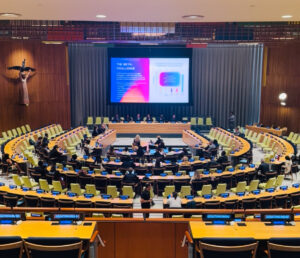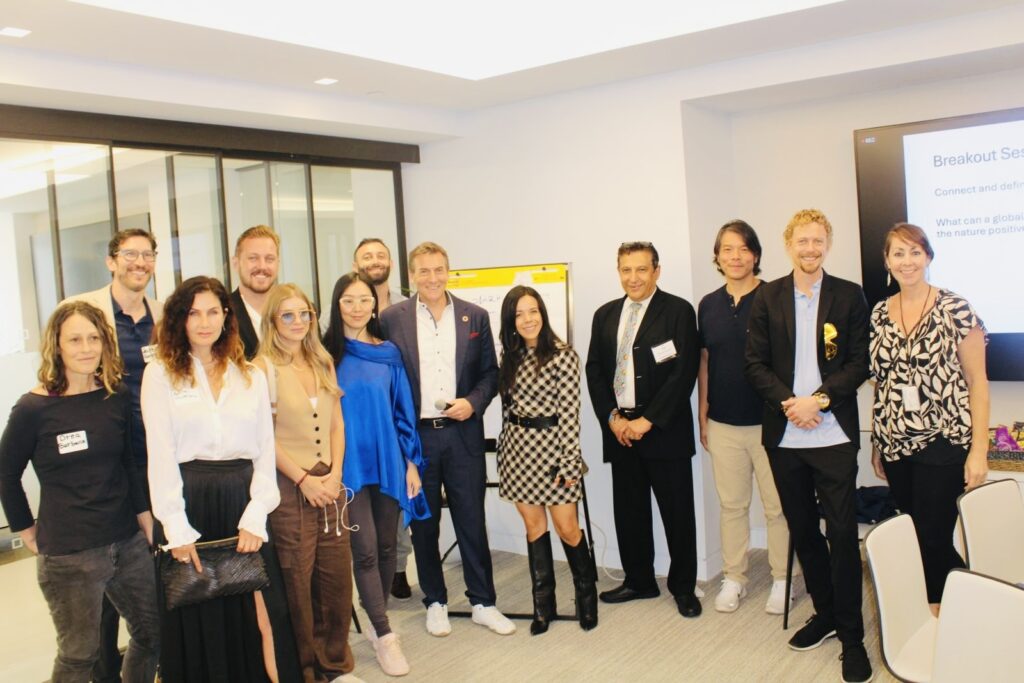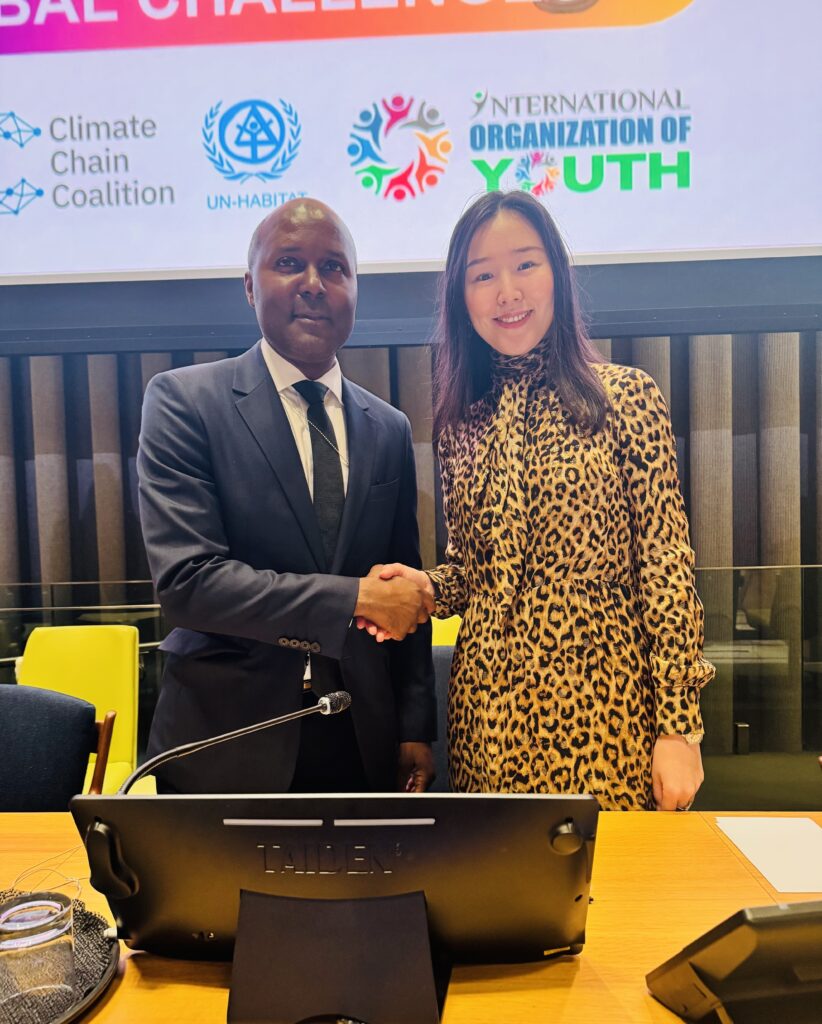On September 18, 2025, the United Nations Headquarters in New York opened its doors to an extraordinary gathering. Leaders, ambassadors, innovators, youth representatives, and changemakers filled the Trusteeship Council Chamber for the GloCha UN HQ NY Conference & Exhibit 2025, a full-day event built around one ambitious theme:
“Local Action for Global Challenges – Harnessing the Power of Emerging Technologies, Innovation & Youth for Our Common Future.”
Among the many respected figures present was Hina, Chair of Relizon Ai, who represented the company on a global stage. It was a moment of pride for Relizon Ai—a company dedicated to building digital business infrastructure that helps organisations grow, scale, and succeed worldwide.
Hina’s presence was more than attendance. It was a message: Relizon Ai is not only building systems for businesses, it is stepping into conversations that shape how digital public infrastructure supports communities, economies, and sustainable futures.
Why This Event Mattered
The GloCha Conference is unlike typical conferences. Organized by a coalition of forward-looking partners including the International Association for the Advancement of Innovative Approaches to Global Challenges (IAAI GloCha), UN Habitat Youth Programme, and the Permanent Mission of The Bahamas, it combined diplomacy, technology, and grassroots energy into one space.
For the UN, the conference was a way to highlight Digital Public Infrastructure (DPI) as a systemic solution—something not abstract but practical, something that can directly empower people and local communities to tackle global problems.
For Relizon, the connection was immediate. DPI is at the heart of what the company does—providing digital foundations that help businesses move beyond borders, scale trust, and integrate with the wider global economy. Being part of these conversations wasn’t just useful; it felt necessary.
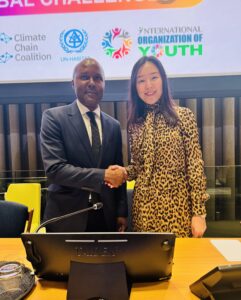
Figure : Hina, Chair of Relizon Ai, shaking hands with the Ambassador of The Bahamas at UN Headquarters, New York. A moment of connection and shared vision
A Defining Moment: Hina’s Handshake with the Bahamas Ambassador
As Chair of Relizon Ai, Hina has always been focused on more than just the company’s day-to-day operations. Her leadership has been about positioning Relizon Ai as a trusted global partner. Attending the UN conference allowed her to do exactly that—meeting ambassadors, listening to policymakers, and engaging with innovators who share the same vision of a connected, digital-first world.
But one moment stood out above all others: Hina’s handshake with the Ambassador of The Bahamas.
The Bahamas played a central role as co-organiser of the event, and the Ambassador’s leadership was critical in bringing the conference to life. For Hina, that handshake symbolised more than a greeting. It was a bridge—between Relizon Ai and the diplomatic community, between private sector expertise and government-led global initiatives, and between vision and execution.
This was not just a symbolic photo opportunity—it represented Relizon Ai stepping confidently into the circle of international trust. The image of that handshake now stands as a reminder that the company’s influence is growing beyond business and into the realm of diplomacy and global cooperation.
Inside the Conference: A Day of Ideas and Collaboration
The day was packed with thought-provoking panels, presentations, and discussions. Each session circled back to the role of emerging technologies and digital systems in creating local solutions to global challenges.
Opening Session: Setting the Tone
The morning began with high-level leaders including:
⦁ H.E. Ambassador Stan Smith from The Bahamas
⦁ Dr. Monica Musenero Masanza, Minister of Science, Technology and Innovation of Uganda
⦁ H.E. Pema Lektup Dorji, Permanent Representative of Bhutan
⦁ Francesco Corvaro, Italy’s Special Envoy for Climate Change
⦁ Reina Otsuka, UNDP’s Global Lead for Digital for Nature and Climate
⦁ Amandeep Gill, UN Special Envoy for Digital & Emerging Technologies
Their words carried urgency. They reminded everyone that climate change, digital inequality, and governance challenges cannot be solved in isolation. Digital public infrastructure, when designed inclusively, could unlock entirely new ways of working together.
For Relizon Ai, this was reaffirmation. The company’s mission—to help businesses scale globally through reliable digital foundations—isn’t just about commerce. It’s about resilience and trust, the same values highlighted at the UN.
Digital Public Infrastructure in Practice
The late-morning session showcased practical examples: blockchain for governance, digital IDs for global pension funds, and Web3 applications for climate action.
Hina listened as Diana Barrero Zalles from GBBC explained how Web3 tools could help unlock global challenges. The parallels with Relizon Ai work were striking. Both approaches revolved around building systems that people can trust.
Local Climate Finance Innovation
The afternoon moved into solutions for financing climate action through digital platforms. From Evercity’s work on climate finance to the UN Office for Outer Space Affairs’ discussion on ocean action, the message was clear: digital systems can—and must—channel funding effectively to where it’s needed most.
Relizon Ai has long understood that businesses require transparent, scalable infrastructure. The same logic applies here: whether it’s a startup seeking global expansion or a community financing a local climate project, the infrastructure must be reliable, secure, and trusted.
Youth and the Future
Later in the day, young leaders took the stage. Their perspectives were refreshingly direct. They asked: if digital systems are being built for the future, why not involve the generation that will live with them the longest?
This resonated deeply. Relizon Ai is built with future generations in mind, ensuring that the systems created today remain resilient, adaptable, and inclusive tomorrow.
Exhibition: Mastering Global Challenges with Local Action
Alongside the conference, the exhibit ran from 8–19 September in the UN building. It showcased case studies and innovations under the title “Mastering Global Challenges with Local Action.”
Walking through the exhibits, it became clear that the future is already here. From student-led initiatives to global blockchain platforms, people everywhere are experimenting with how digital tools can support sustainability. For Relizon Ai it was proof that the company is part of a wider ecosystem—a global movement determined to build a better digital and social future.
Relizon Ai Role in the Bigger Picture
At the heart of Relizon Ai mission is a belief: digital business infrastructure is more than technology; it is trust made tangible.
Every business entering a new market faces the same barriers: fragmented systems, compliance hurdles, cultural differences, and the ever-present challenge of building trust. Relizon Ai removes these barriers by designing infrastructure that:
⦁ Scales across borders.
⦁ Ensures compliance with international standards.
⦁ Builds confidence with global partners.
⦁ Adapts to emerging technologies.
This is why Relizon Ai work matters on the world stage. A company may be small or large, but without reliable digital infrastructure, its global ambitions remain limited. By empowering businesses, Relizon Ai is indirectly contributing to the United Nations Sustainable Development Goals (SDGs)—from economic growth to reduced inequalities and innovation.
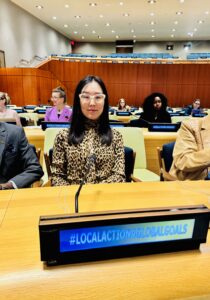
The Human Side of Leadership
It’s easy to think of infrastructure as abstract. But behind every system are people—leaders who guide vision, strategy, and relationships.
Hina’s leadership is central to Relizon Ai identity. Her presence at the UN highlighted qualities that set Relizon Ai apart:
⦁ Credibility – Showing that Relizon Ai can sit at the same table as governments and UN agencies.
⦁ Prestige – Representing the company at an international event where only the most relevant actors were present.
⦁ Trustworthiness – Demonstrating Relizon Ai commitment to transparent and sustainable practices.
Moments like her handshake with the Bahamas Ambassador captured all three qualities in a single gesture. It wasn’t staged—it was real. And that authenticity is what makes Relizon Ai stand out.
A Vision for the Future
The UN conference was a milestone, but Relizon Ai sees it as a stepping stone. The company’s vision extends beyond this event:
⦁ Global Partnerships – Relizon Ai aims to deepen collaborations with international bodies, businesses, and innovators.
⦁ Infrastructure Innovation – Constantly improving digital systems so businesses can thrive in unpredictable markets.
⦁ Sustainability at the Core – Designing solutions that don’t just grow economies but protect societies and the planet.
⦁ Youth Engagement – Ensuring future generations are part of building the systems they will inherit.
By taking part in events like the GloCha UN Conference, Relizon Ai signals that it isn’t just building tools—it is helping design the future of digital cooperation.
Final Reflections
The GloCha UN HQ NY Conference & Exhibit 2025 brought together leaders from every corner of the globe to explore how digital public infrastructure can serve humanity in an age of uncertainty.
For Relizon Ai it was an opportunity to show the world what the company stands for: trust, innovation, and scalability. For Hina, it was a moment of recognition—acknowledging her leadership as Chair and the growing influence of Relizon Ai.
And for everyone who saw that handshake with the Ambassador of The Bahamas, it was a reminder that progress is built not just on technology but on human connection.
As Relizon Ai looks ahead, one thing is clear: its role in the global digital ecosystem is only beginning. And with Hina’s leadership, the company is well on its way to becoming a trusted, prestigious name in building digital infrastructure for businesses worldwide.

